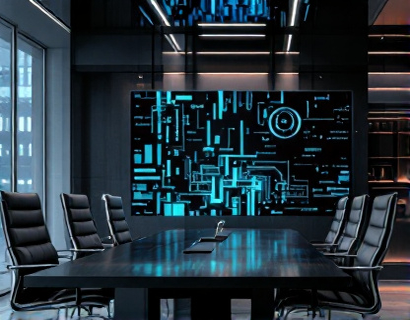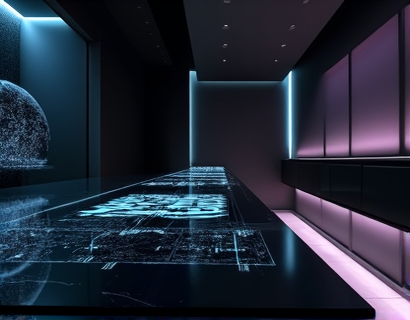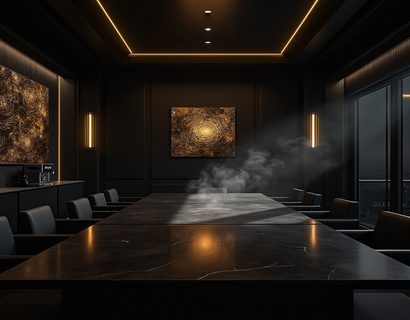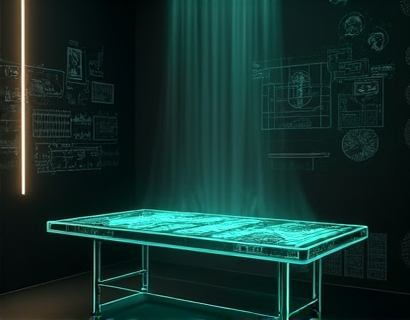Maximizing Architecture Firm Efficiency: Advanced Software Solutions for Streamlined Management and Enhanced User Experience
In the rapidly evolving landscape of architecture, firms are under constant pressure to deliver high-quality projects while managing complex business operations. Advanced software solutions are emerging as pivotal tools that revolutionize how architecture firms operate, optimizing internal processes and enhancing user experience. These innovative platforms are designed to streamline project management, resource allocation, and client communication, allowing architects to concentrate on their core creative tasks. This article delves into the transformative impact of these software solutions, highlighting how they provide a competitive edge in the modern architecture industry by transforming management and fostering enhanced collaboration.
Streamlining Project Management
One of the most significant challenges architecture firms face is managing multiple projects simultaneously. Advanced software solutions offer robust project management tools that enable firms to track progress, manage timelines, and allocate resources efficiently. These platforms provide a centralized dashboard where project managers can monitor the status of each project in real-time, ensuring that deadlines are met and milestones are achieved. By automating routine tasks such as scheduling meetings and sending reminders, these tools reduce the administrative burden on team members, allowing them to focus on more critical aspects of project delivery.
For instance, features like Gantt charts and Kanban boards visualize project timelines and task dependencies, making it easier for teams to understand their roles and responsibilities. This visual approach not only improves communication but also enhances accountability. Additionally, integrated document management systems ensure that all project-related files are stored in one accessible location, reducing the risk of miscommunication and lost documents. This level of organization and transparency is crucial for maintaining client trust and satisfaction.
Optimizing Resource Allocation
Effective resource allocation is another critical area where advanced software solutions excel. Architecture firms often struggle with balancing the workload among team members, ensuring that each project has the necessary resources without overburdening any individual or department. Sophisticated software platforms use algorithms to analyze project requirements and team capabilities, automatically assigning tasks based on availability and expertise. This intelligent allocation not only maximizes productivity but also prevents burnout by ensuring a balanced workload.
Moreover, these platforms provide insights into resource utilization patterns, helping firm managers make informed decisions about staffing and training needs. By identifying bottlenecks and areas for improvement, firms can optimize their resource deployment, leading to cost savings and higher project completion rates. The ability to dynamically adjust resource allocation in response to changing project demands is a significant advantage, enabling firms to remain agile and responsive in a competitive market.
Enhancing Client Communication
Client communication is a cornerstone of successful architecture practice. Advanced software solutions facilitate seamless and efficient communication between firms and their clients, ensuring that all parties are aligned and informed throughout the project lifecycle. Integrated communication tools such as messaging, video conferencing, and collaborative document editing enable real-time interaction, reducing the need for multiple email threads and phone calls. This immediacy helps to build stronger relationships and foster trust with clients.
Furthermore, these platforms often include client portals where clients can access project updates, view documents, and provide feedback directly within the system. This level of accessibility empowers clients to stay engaged and involved, leading to higher satisfaction and better project outcomes. By centralizing communication channels, firms can ensure that all interactions are documented and easily traceable, providing a clear audit trail for both the firm and the client.
Improving Collaboration and Productivity
Collaboration is key to the success of any architecture firm, and advanced software solutions are designed to enhance this aspect significantly. These platforms support collaborative workflows by allowing multiple team members to work on the same project simultaneously, regardless of their physical location. Real-time editing and version control features ensure that everyone is working with the most up-to-date information, minimizing the risk of errors and conflicts.
In addition to collaborative editing, these tools often include integrated design and modeling capabilities, enabling architects to create and manipulate 3D models directly within the platform. This integration streamlines the design process, reducing the need to switch between different software applications. The ability to visualize and refine designs in a cohesive environment not only speeds up the design phase but also improves the quality of the final product.
Productivity gains are further amplified through automation of repetitive tasks. For example, software can automatically generate reports, create bill of materials, and perform other routine functions. This automation frees up time for team members to focus on more value-added activities, such as design innovation and client interaction. By reducing manual effort, these tools help firms achieve higher output with the same or even fewer resources.
Enhancing User Experience
The user experience within these advanced software platforms is designed to be intuitive and user-friendly, ensuring that team members can adopt and utilize the tools effectively. Comprehensive onboarding processes, including tutorials and support resources, help new users get up to speed quickly. The interfaces are crafted to minimize learning curves, allowing users to focus on their work rather than navigating complex menus or functions.
Accessibility is another critical aspect of user experience. These platforms are designed to be accessible on various devices, including desktops, tablets, and smartphones, ensuring that team members can access project information and collaborate from anywhere. This flexibility is particularly valuable in today’s remote and hybrid work environments, where team members may be distributed across different locations.
Competitive Advantage in the Modern Architecture Industry
The adoption of advanced software solutions provides architecture firms with a significant competitive advantage in the modern industry. By optimizing internal processes and enhancing user experience, these firms can deliver projects more efficiently and effectively. The ability to manage projects seamlessly, allocate resources intelligently, communicate transparently, and collaborate seamlessly sets these firms apart from those that rely on traditional methods.
Moreover, the data-driven insights provided by these platforms enable firms to make informed decisions, identify trends, and adapt to market changes more rapidly. This strategic advantage is crucial for staying relevant and successful in a rapidly evolving industry. As more firms recognize the benefits of these advanced tools, those that embrace them early on will likely gain a lasting edge in the market.
Conclusion
In conclusion, advanced software solutions are transforming the way architecture firms operate, offering powerful tools to streamline management and enhance user experience. By leveraging these platforms, firms can achieve greater efficiency, productivity, and collaboration, ultimately leading to higher client satisfaction and project success. As the industry continues to evolve, the adoption of these innovative solutions will become increasingly essential for firms looking to thrive in a competitive landscape.










































